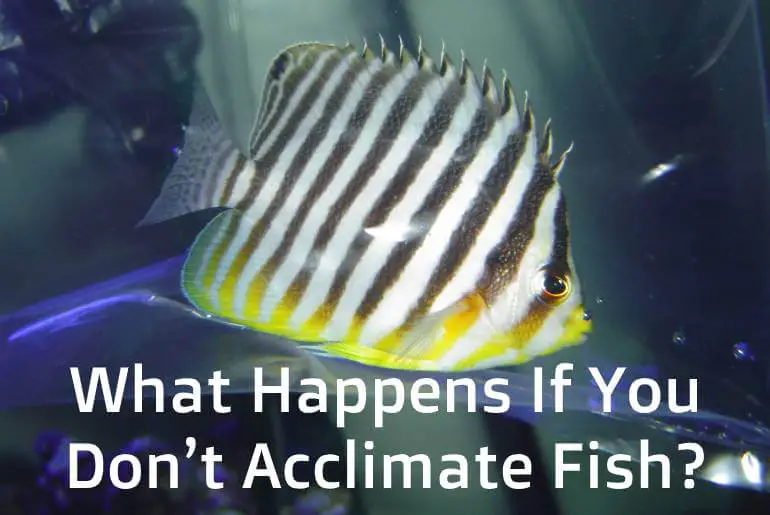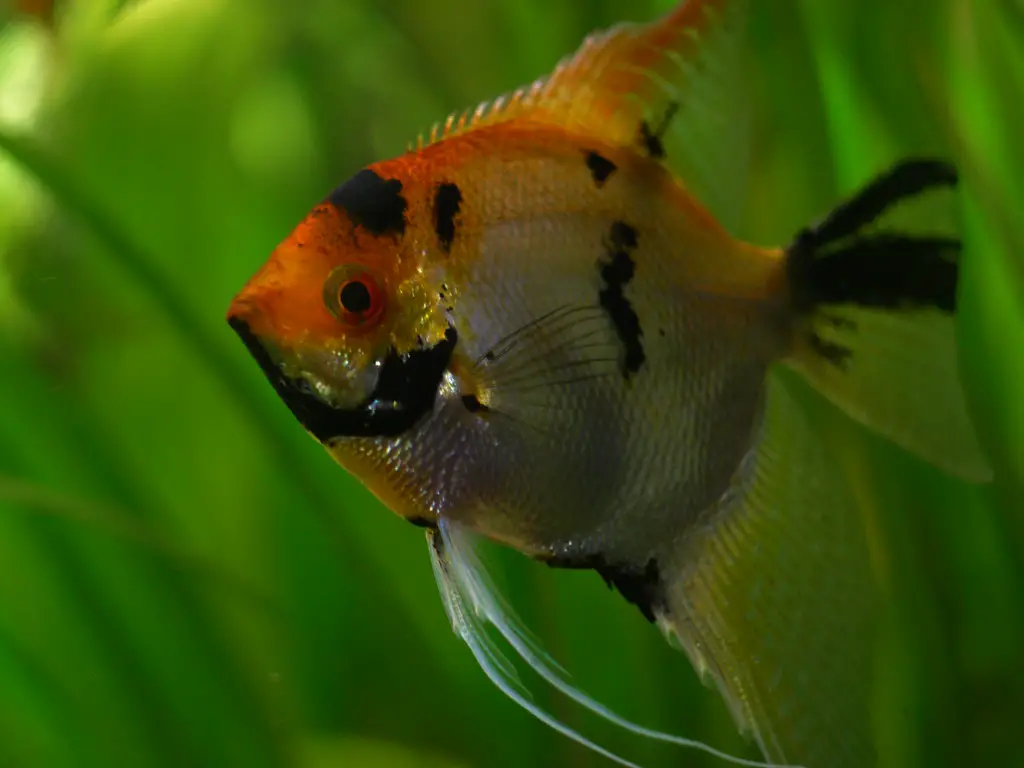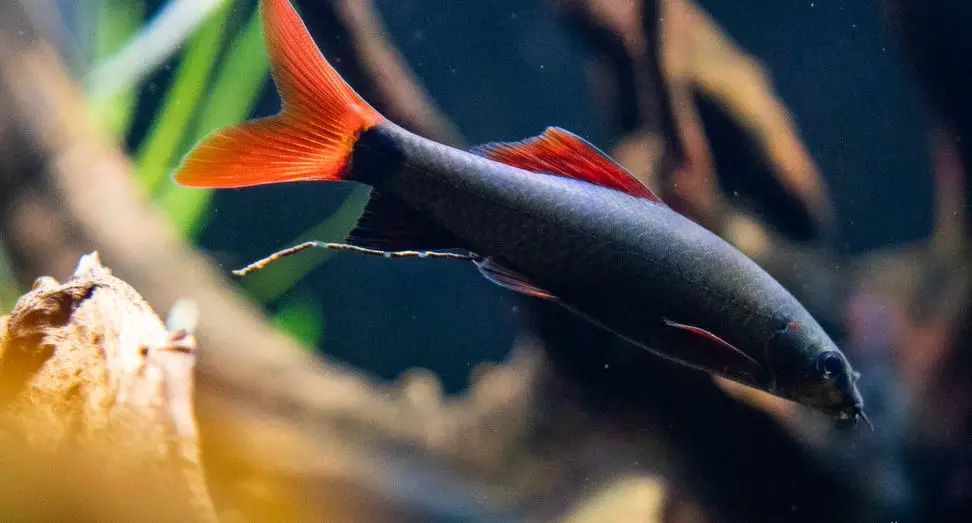The first thing you do when you get a fish, you make sure they live well in your tank. But this process raises questions. Do you directly pour the fish from the bag to the tank or you acclimate it? What happens if you don’t acclimate the fish?
Well, your fish will die if not acclimate to the new tank. Acclimation helps the fish to adjust properly to the water environment in the new tank, introducing fish to the new system. If you don’t acclimate your fish, they will have a hard time adjusting to the new environment resulting in stress, stress-related diseases, and eventually death.
There are certain things to look at before you introduce your new fish to the entirely new tank for it.
Let’s get started on the journey of acclimation and its importance for your fish. You can’t leave anything out when it comes to the safety of the new member.
Acclimation: An Overview
When you are introduced to a new environment with slightly different conditions, you need to adapt to it to survive.
Acclimation is just as simple as that. It is a physiological adjustment of an organism to adapt to its new environment. The sudden change in the condition triggers acclimation in an organism.
The same is necessary for the fish. Fish needs to adjust to the new tank environment if you want to pet it at home.
The change in the temperature, pH, etc. alters the familiar condition for any living being. And fish is no different.
You have to acclimate fish to the tank environment to avoid the consequences that can take place.
You also have to adjust the pH of the aquarium as well as the temperature just so your fish get the ideal condition to live.
And as evolution agrees with, every living organism learns to adapt to its new environment gradually. The sudden change in any aspect, whereas, kills the organism.
What Happens If You Don’t Acclimate The Fish?
The vibe that you get when you buy a new fish and are excited to keep it in your tank in your home. But, unfortunately, the fish dies within an hour in the tank.
This can break anyone’s heart. Most of the time we blame pet store for it, but is it really their fault? Most of the time the death of your new fish results from your carelessness and little knowledge.
Well, as we know, little knowledge is dangerous, so it’s better to learn how it goes. Fish react to the slightest change in the environment as they are quite sensitive.
When you bring fish home from the store, the fish bag becomes its new home for a while. They are already struggling within the bag for their survival.
Fish cannot live long in a bag but they will try to adjust to it for their survival. So here is what happens when you don’t acclimate your fish.
When you suddenly pour this struggling fish into the new environment, the sudden change harms the fish differently.
Your new fish tries to adjust to the sudden change, which stresses them at first. Some of the fish gradually adjust but most of them show health issues and dies eventually.
That’s why it is necessary to acclimate your fish to the new environment before dropping it into a completely new tank.
Acclimation helps the fish to adjust to the new system and doesn’t stress the fish with the changes.
The slow and step by step introduction and acclimation of fish to a new environment makes it easier to adapt to its new home.
How Can You Acclimate Fish In The Tank?
As you know what happens to the fish when they are not acclimate, now you need to know how you can do this.
From using a bucket to drip method and of course the floating bag technique, there are many ways to acclimate fish.
Here we will learn the two best, effective methods, according to the experts, to acclimate the fish.
The Floating Bag Method
If you are looking for a simple and easy acclimation method, then here is the answer.
The floating bag method is effective for simple fish that are not fussy and have complex water requirements like reefs.
Freshwater species, however, adjust well with this acclimation method.
The steps are quite simple. These six steps are easy to understand and do with no further complaints whatsoever.
You might also like the detailed study on Fish Acclimation Process.
Step 1: Aquarium Lights
It is quite traumatic for the fish when you suddenly expose it to a well-lit aquarium in the room. So, it is better to switch off the aquarium lights and dim the room lights as far as possible.
Step 2: Float The Bag
Here is the step when the fish come close to the tank water separated with a plastic wall. The bag, however, must be sealed properly when you float it on the water surface.
It is done to acclimate fish with the temperature present in the tank. This step doesn’t take much time, you need to float the sealed bag for not more than 30 minutes.
This step not only helps to protect fish from thermal shock but also maintain the dissolved oxygen level high.
Step 3: Open And Roll
Now it’s a fun time in the acclimating process. You have to open and roll the edge of the bag and this opening and rolling create an air pocket.
The bag needs to be intact so be careful while opening the bag. The other purpose is to make it sturdy and be sure it doesn’t collapse.
After this, your bag will float properly without tipping over. Do this for a few minutes and go for the next step.
Step 4: Introduction To Tank Water
You need to make fish familiar to new tank water, so it is better to do it within the bag first. What you have to do is take half a cup of water every 5 minutes and add it to the floating bag.
The addition should be in such a way that the water previously in the bag and tank water is in the ratio 1:1 i.e., equal.
Step 5: Get Rid Of Half Bag Water
Now do a simple thing and pour out half of the water present in the bag into the bucket outside.
Now when the bag is half-filled, pour the tank water half of the cup every five minutes to make it reach the previous level again. Float this bag again for a few minutes to adjust it properly to the new system.
This way fish will adjust to the tank water gradually but properly.
Step 6: Transfer
Now is the time, when you can do what you wanted to do since the fish arrived. But remember no amount of bag water is transferred to the tank.
It is not good to pour bag water into the tank to avoid diseases and chemicals it brings. What you can do is, use your clean hand or net to separate the fish from the bag and carry it into the tank.
Drop the fish carefully into the tank, and there you go, you get your new fish floating in the tank.
The Drip Method
If you want to go by the experts, then this method is supposedly the most effective one to acclimate the fish.
But here is the catch, you need to look into your wallet for this method to uprise. You need to buy a drip acclimation kit which barely makes any hole in your wallet though.
And of course, if you’re quite creative and resourceful, you can DIY this at home as it includes a few flexible tubing and attaching pieces.
Here are the 6 steps that help you to quickly acclimate your fish
Step 1: Floating The Bag
This process quite similar to the floating bag method. The fish bag is floated in the water to temperature acclimate the fish.
The water in the bag gets a similar heat and gradually attains a similar temperature as the tank water.
Float the sealed bag for about 20-30 minutes to prevent thermal shock to the fish.
Step 2: Filling The Bucket
Get a clean 5-gallons bucket separated for this ideal purpose. Now, you have to half-fill the bucket with aquarium water.
Step 3: Transfer Fish Into Bucket
In this very step, your fish finally gets out of the shipping bag and enjoys the tank water.
You have to slowly open the bag and tilt it into the bucket with tank water. But remember to notice whether the fish is submerged or not.
Fish should be submerged fully in the water when you are pouring all the bag content into the bucket.
Step 4: Siphoning
This step includes the simple process of using a siphoning tube with each end in an aquarium and bucket respectively.
Remember, the aquarium should always be in a higher place than the bucket so the tube can run down from the aquarium to the bucket.
The ideal thumb rule for the drip rate is 3 to 5 drops per second. And of course, gravity plays a vital role to drip the water down.
If the water doesn’t run through the tube from the aquarium, simply suck the water from the bucket end tube.
Now, take a rest and check the bucket till the water in it doubles.
Step 5: Discard
Once the water is doubled or say full in the bucket, discard half of the water with the help of a cup.
You use a cup to discard the water to avoid dropping the fish along with water.
After discarding half the water, repeat the drip process again with the same siphoning technique till the bucket is full again.
Step 6: Tank Transfer
In this step, your fish finally gets into its new home. Now, all you have to do is take a clean new plastic bag and put the fish from the bucket along with the water.
Once you scoop the fish out with the help of a bag, pour all the content in the bag into the aquarium.
Here, you have your fish floating happily in your desired tank.
Things To Check When You Acclimate Fish
- Detoxify your fish so that it doesn’t develop diseases due to ammonia presence.
- Never acclimate your fish using a net as it can get stuck in those small holes.
- Never introduce any pet store water into your tank along with the fish.
- Stay calm and steady while acclimating the fish. Slow and steady wins the race.
- Always check the pH level and learn how to adjust the pH in an aquarium to make it favorable according to the fish.
- Quarantine fish for 2-3 weeks to be sure about diseases like Ich and Velvet.
How Long Should You Let Your Fish To Acclimate?
Well, that depends. There is a fine line of minimum and maximum time limit for acclimation.
Acclimation is a process that generally involves more than one step. Each step takes a certain time while the process lasts.
You will have to wait for more than 15 minutes for all the steps to complete. The minimum time to acclimate a fish is, thus 20 minutes.
But, if you follow the ideal rule, then it is better to leave your fish for at least 1 hour to acclimate to the new tank.
The size, however, determines the time limit as well. Larger fish need more than 1 hour to acclimate to the new environment.
What Are The Benefits When You Acclimate The Fish?
What are the advantages of adjusting to a new environment you are bound to live in? The question has the answer itself. Are there any disadvantages to getting familiar with the surrounding?
The benefits are probably necessary to turn into a list so that it will be easier for you to decide about acclimation.
Easy Adaptation
When you acclimate your fish to the new environment, it will be easier and faster for the fish to adapt to new conditions. The new system with a well-maintained environment gets easier to adjust for acclimated fish.
Health Benefits
Acclimation is a blessing in disguise for the fish that are more sensitive than other breeds. Some fish develop serious health issues and even die when you force them into a new environment with no pre-warnings.
Acclimation helps the fish to know what it is getting into. They gradually adjust to the new system presented even before getting into the system.
Less Stress
Stress results from the sudden change in the environment fish face. It is quite difficult to pinpoint which factor does what to a fish.
When you acclimate a fish to a new tank, they slowly adapt to the small changes that are introduced to them.
They adjust gradually which means there’s barely any stress present due to climate or environmental change.
High Survival Rate
It is quite clear that diseases and stress in the fish cause the sudden death of the fish in the tank. So, when acclimation minuses these both factors considered, the survival rate in a new tank is quite high.
When Should You Not Acclimate The Fish?
Acclimation is done to make fish familiar with the new condition it is going to live in. It helps to reduce the stress and death threat of fish in a different environment.
But there are certain conditions when it is best to skip the acclimation step. It is best for the fish to directly get into the tank.
When you see your fish struggling in the bag, stressed enough, it is better to directly keep the fish in the tank.
Sometimes, your fish may appear dead or even show signs of difficulty breathing. It is a wise idea to skip the acclimation step.
You need to transfer your fish to the quarantine tank directly when it seems greatly agitated or stressed.
Breathing difficulty and agitation are the common symptoms fish show when the bag water is fatal and toxic.
Frequently Asked Questions
How Long Should You Wait To Put New Fish In The Tank?
You need to let the tank cycle for 3-6 weeks before you add any fish to the tank. After this, you need to float the fish bag for 20 minutes and acclimate the fish for the next 20.
How Long Can A Fish Live In A Plastic Bag?
A fish can survive for 7-9 hours in a plastic bag.
Can You Transport Your Fish In A Ziplock Bag?
Yes, you can transport your fish in a Ziplock bag but the time limit is for 40 minutes only.
Conclusion
Briefly, it is simple biology here, make your fish comfortable in the new environment so that you can have a beautiful aquarium. The safety and life-span depend on the way you help your fish adjust in the new tank. The period between the fish bag to the tank is a crucial stage to determine the future of your fish. Acclimate your fish and help it through all the changes if you want your fish to be healthy and alive. As said, acclimation is a blessing in disguise. You can’t be thankful enough for the benefits acclimation brings along.
Happy Fish Keeping!






